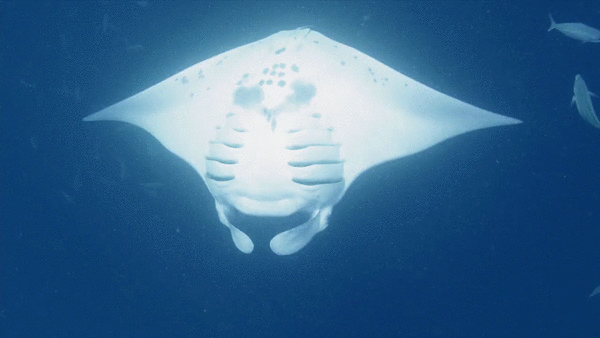Manta Ray Watching, often referred to as the gentle giants of the ocean, are among the most captivating and magnificent creatures that roam the world’s seas. These graceful giants, known for their impressive wingspans and elegant movements, have become a favorite for eco-tourists and nature enthusiasts seeking an unforgettable marine encounter. Manta ray watching, a popular activity in various coastal destinations, offers a unique opportunity to witness these magnificent creatures in their natural habitat. In this article, we will delve into the world of manta ray watching, exploring the best places to witness these awe-inspiring creatures, the importance of responsible tourism, and some fascinating facts about manta rays.
Where to Go Manta Ray Watching
If you’re eager to witness the beauty of manta rays up close, you’re in luck, as there are several locations around the world renowned for Manta Ray Watching. Here are a few exceptional destinations to consider:
- Maldives: The Maldives is a tropical paradise known for its crystal-clear waters and abundant marine life. Many dive centers and tour operators in the Maldives offer manta ray watching excursions. One of the most famous spots is Hanifaru Bay, where you can witness congregations of manta rays during the monsoon season.
- Hawaii, USA: The Hawaiian Islands are a haven for marine enthusiasts, and you can often spot manta rays near the Big Island. Night snorkeling or diving experiences at places like Kona’s Manta Ray Village are particularly popular.
- Bali, Indonesia: Bali is a well-known destination for underwater adventures, and Nusa Penida is one of the best spots for manta ray encounters. Manta Point, aptly named, offers thrilling opportunities to swim alongside these gentle giants.
- Socorro Islands, Mexico: Located in the eastern Pacific Ocean, the Socorro Islands are a remote paradise for divers. These islands are home to various marine species, including manta rays. The Revillagigedo Archipelago is a hotspot for manta ray watching.
- Komodo, Indonesia: Not only is Komodo famous for its Komodo dragons, but it’s also an excellent destination for manta ray sightings. Dive sites like Manta Alley are frequented by these majestic creatures.
Responsible Manta Ray Watching
While manta ray watching can be a life-changing experience, it is crucial to engage in this activity responsibly to protect these gentle giants and their fragile ecosystems. Here are some guidelines to ensure your manta ray encounter is eco-friendly:
- Choose Responsible Operators: Opt for tour operators and dive centers that follow ethical and sustainable practices. These operators prioritize the well-being of the manta rays and their habitats.
- Maintain a Respectful Distance: When observing manta rays, maintain a respectful distance and avoid touching or chasing them. Keep in mind that these creatures are sensitive to disturbances.
- Practice Responsible Snorkeling and Diving: If you’re snorkeling or diving to watch manta rays, refrain from excessive noise and sudden movements. Be aware of your surroundings and the marine life.
- No Feeding: Feeding manta rays can disrupt their natural behavior and diet. Ensure that your chosen operator does not engage in any form of feeding to attract these animals.
- Limit Contact: If you’re snorkeling or diving at night to witness manta rays, use red or amber lights instead of bright white lights. Bright lights can scare them away.
Fascinating Facts About Manta Rays
Manta rays are intriguing creatures with unique characteristics that set them apart from other marine animals. Here are some fascinating facts about these gentle giants:
- Size Matters: Manta rays are some of the largest fish in the ocean, with wingspans that can reach up to 25 feet (7.6 meters). Despite their enormous size, they are known for their graceful and agile movements.
- Filter Feeders: Manta rays are filter feeders, primarily consuming tiny plankton and small fish. They use their wide mouths to filter food from the water as they swim gracefully through the ocean.
- Distinctive Markings: Each manta ray has a unique pattern of dark spots on its underside, which serves as a way to identify individuals. Researchers use these patterns for population studies.
- Long Lifespan: Manta rays have a relatively long lifespan, living for up to 40 years or more in the wild. This longevity contributes to their importance in marine ecosystems.
- Cephalic Fins: Manta rays have two distinctive cephalic fins on either side of their heads, giving them an almost otherworldly appearance. These fins help guide plankton into their mouths while feeding.
Conclusion
Manta ray watching is a magical and educational experience that allows us to connect with the wonders of the ocean. These gentle giants, with their astonishing size and graceful movements, inspire awe and appreciation for the marine world. To ensure the conservation of manta rays and their habitats, it is imperative that we engage in responsible tourism practices. By choosing ethical operators, maintaining a respectful distance, and following guidelines for eco-friendly encounters, we can contribute to the protection of these magnificent creatures.
So, whether you find yourself in the azure waters of the Maldives, the volcanic depths off the coast of Hawaii, or the vibrant coral reefs of Indonesia, keep your eyes peeled for the mesmerizing sight of manta rays gliding effortlessly through the ocean. By doing so, you’ll not only create lasting memories but also play a part in preserving these enchanting creatures for generations to come. Manta ray watching is more than just a tourist activity; it’s a chance to be a steward of the ocean and an advocate for marine conservation.
Read More: Sustainable Seafood Certification





